Every winter, I make Nalli Nihari, but I haven't documented the recipe until now. The main obstacle has been the lack of satisfactory pictures. Over the years, I either couldn't take any pictures or the ones I did take didn't meet my expectations. I now have eight sets of Nihari pictures from 2017, 2018, 2019, and even this year, I managed to capture the beauty of Nihari twice. Finally, I am content with one set of pictures. It's strange that I couldn't capture the essence of this winter delicacy before. Now that I have the pictures, I feel it's the perfect time to write down the recipe.
Jump to:
- Nalli Nihari, the winter favorite!
- History of Nihari!
- Mutton Nihari, cooking Tips!
- My Nihari preference! Kolkata's favorite winter delicacy, Nalli Nihari!
- Homemade Nihari Masala- a must for this recipe
- Instructions - step by step process of cooking nalli nihari at home
- Equipment
- Here's how I cook Nalli Nihari at Debjanir Rannaghar
- Recipe Card
- Related Recipes
- Mughlai Recipes from Debjanir Rannaghar!
- Have you tried the Gosht Nihari recipe from Debjanir Rannaghar!
- Here's the Mutton Nihari Pin for your Pinterest Board!
Nalli Nihari, the winter favorite!
Nalli Nihari is a delectable stew made by slow-cooking shank meat and marrow bones. It can be prepared using beef, lamb, mutton, or chicken. The shank meat, which comes from the round thigh area, is known for its toughness and dryness, but it is also rich in marrow. The marrow-filled bones, when cooked for hours, release collagen, which transforms into gelatin and enhances the flavor of the stew.
History of Nihari!
Nalli Nihari, a dish that originated from the Mughals, was brought to the Indian subcontinent. At first, the nobles preferred Mutton Nihari, but as time went on, other types of meat like beef and buff were introduced. In Pakistan, beef is the main meat used in Nihari, but nowadays Chicken Nihari is equally popular. In India, you can find different variations of Nihari made with Beef, Mutton, or Chicken. Even in the villages, Nihari is available during the winter season. I have personally enjoyed a satisfying bowl of Nihari in Birbhum during the winter months from the local street vendors.
Mutton Nihari, cooking Tips!
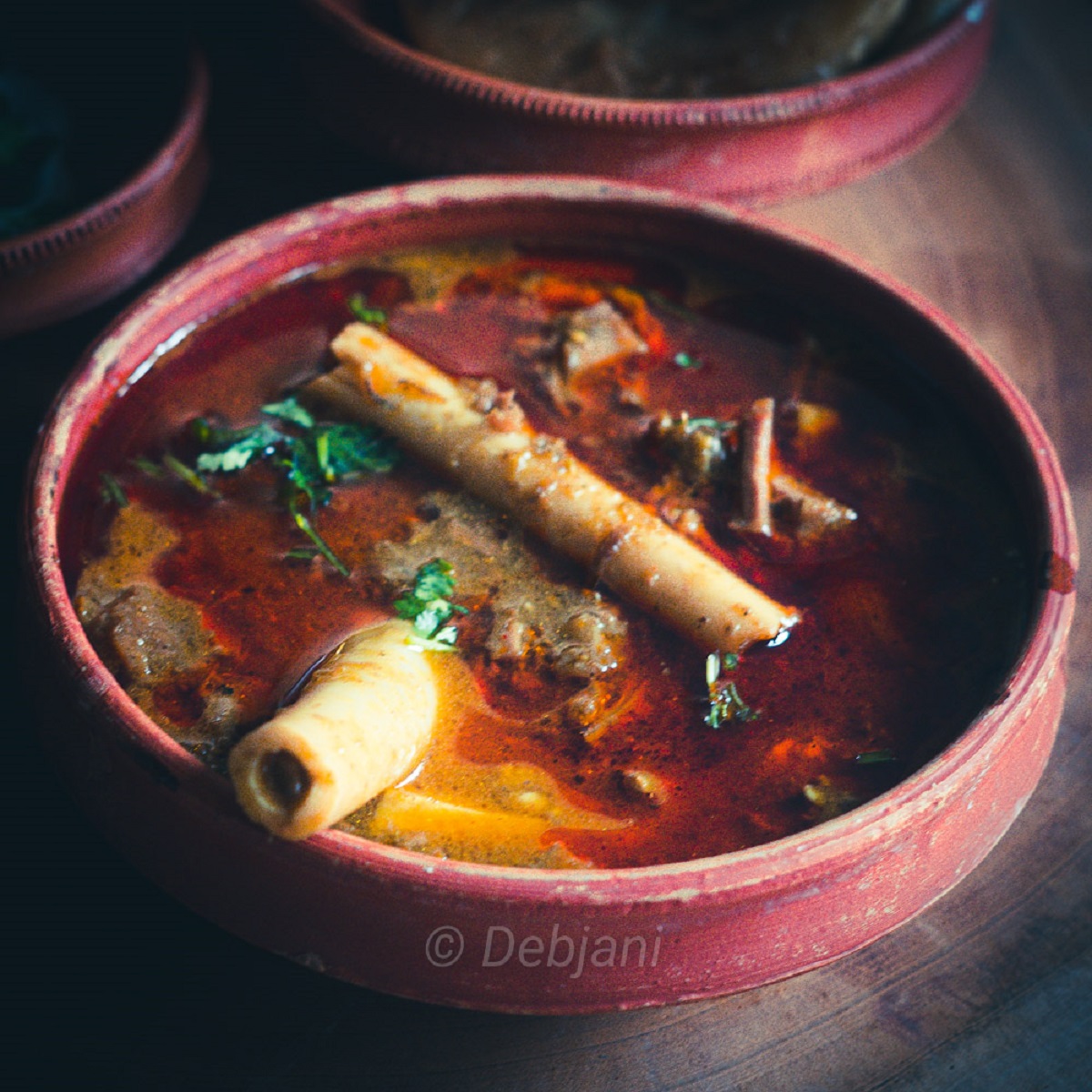
In the traditional method, Nihari is prepared using Ghee, a special blend of spices, and shank meat, which is simmered for approximately 8 hours. Nowadays, some people opt for a lighter version by substituting oil for ghee or using a combination of both. Personally, I choose to use a combination rather than completely omitting ghee, as it possesses various medicinal properties. Additionally, during the winter season, there is no harm in adding a small amount of ghee to enhance the flavor of Nihari.
While I may not cook the meat for a full 8 hours, I ensure it is cooked for at least 6-7 hours. I begin the cooking process at 4 a.m. and finish by 11 a.m. The name "Nihari" originates from the Arabic word "Naahar," which translates to "morning." It is believed that the Nawabs used to enjoy Nihari as part of their breakfast after the Fajr prayer. Although I am not particularly religious, I find cooking it in the early morning somehow contributes to the delicate and nuanced flavors of the dish.
My Nihari preference! Kolkata's favorite winter delicacy, Nalli Nihari!
We have a preference for indulging in beef Nihari at Sufia, which is situated on Zakaria Street. It's not something we typically prepare at home. As for chicken Nihari, it's not a dish that particularly appeals to me. After all, it requires hours of cooking, which isn't typically done with chicken. However, for the sake of our readers, I will soon share the recipe. There are some individuals who include brain and chunks of mutton fat in their Nihari, in addition to the Marrowbone, and I happen to be one of them. When cooking Nalli Nihari, I opt for a sturdy vessel with a lid.
Homemade Nihari Masala- a must for this recipe
When it comes to cooking Nalli Nihari, I usually skip adding onions. Instead of buying pre-made Nihari Masala, I prefer to make my own spice mix at home. It's not that store-bought spices are inferior, but I have a specific taste preference and making my own mix allows me to have that flexibility. Today, I will be sharing the recipe for Mutton Nihari, which is what I usually cook at home.
Instructions - step by step process of cooking nalli nihari at home
I have included a step-by-step explanation and accompanying visuals for preparing Nalli Nihari through slow cooking. I hope that these resources aid in your comprehension of the home cooking procedure for Nihari.
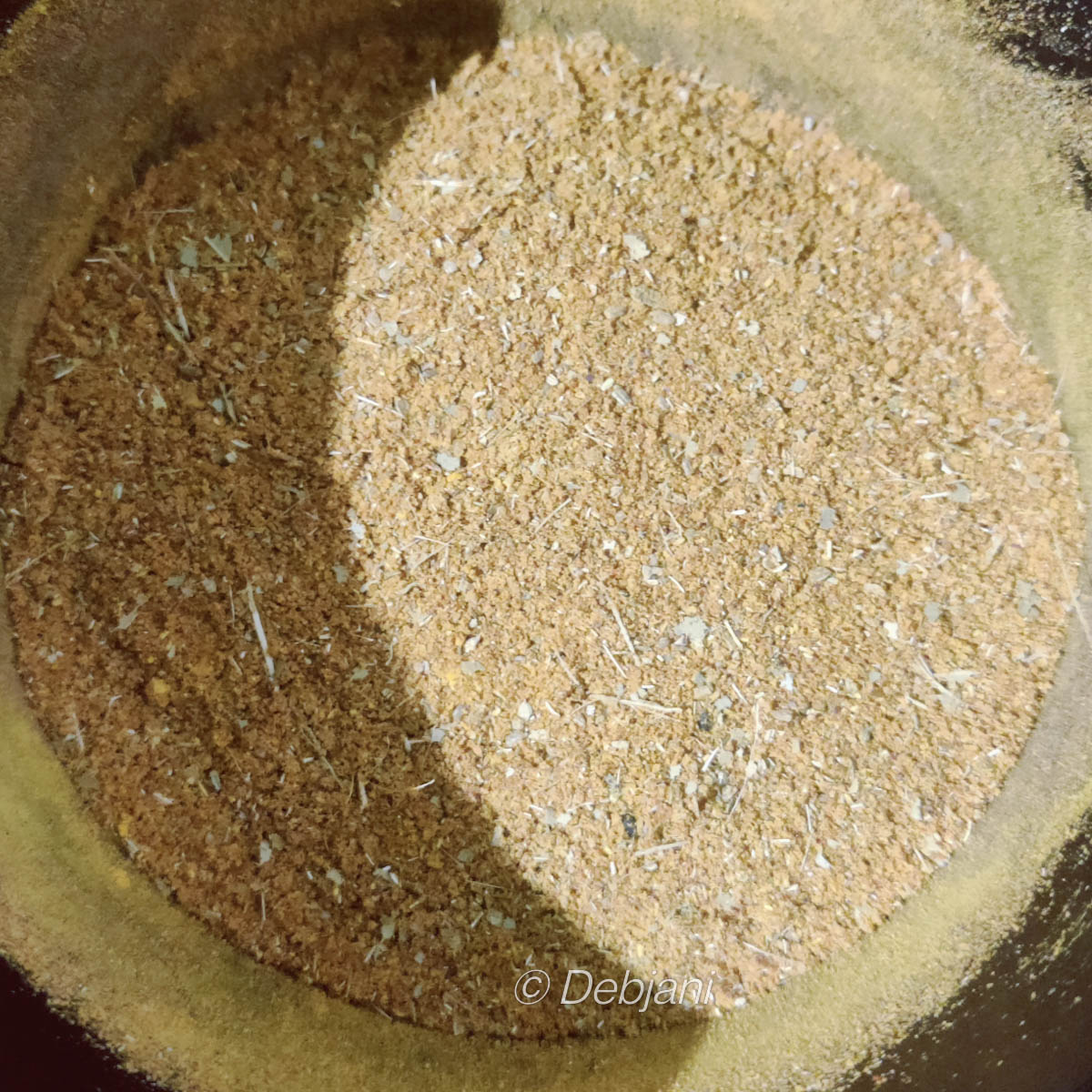
Make the Nihari Masala by combining all the ingredients mentioned in the recipe card. You can store the nihari masala for future use as well.
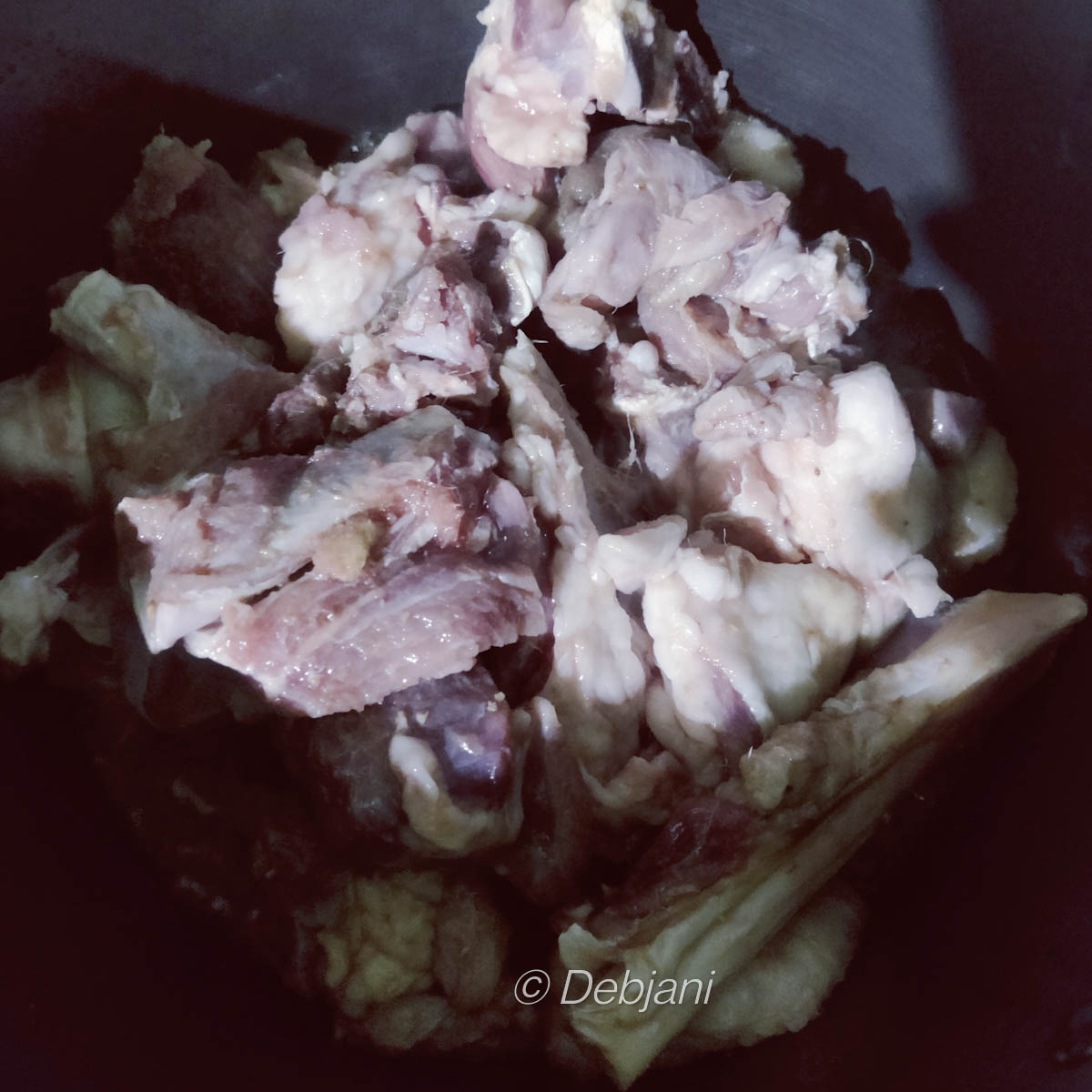
A mixture of Shank pieces of mutton, lamb brain, and fat is a must for making perfect nalli nihari at home. See the recipe card for measurements.
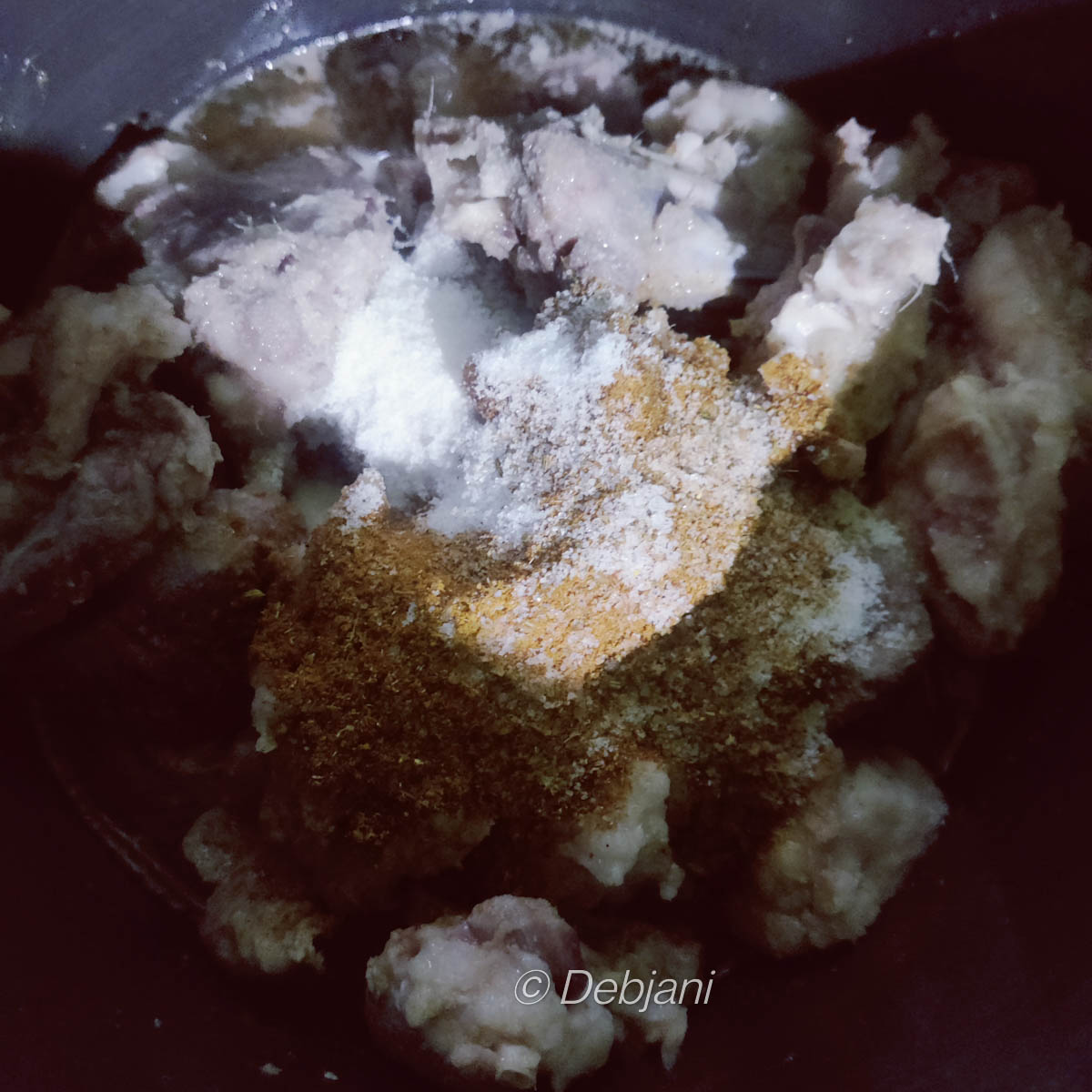
Marinate the mutton chunks with salt, ginger and garlic, and nihari masala. See the recipe card for the process of making Nihari masala and for the measurements as well.
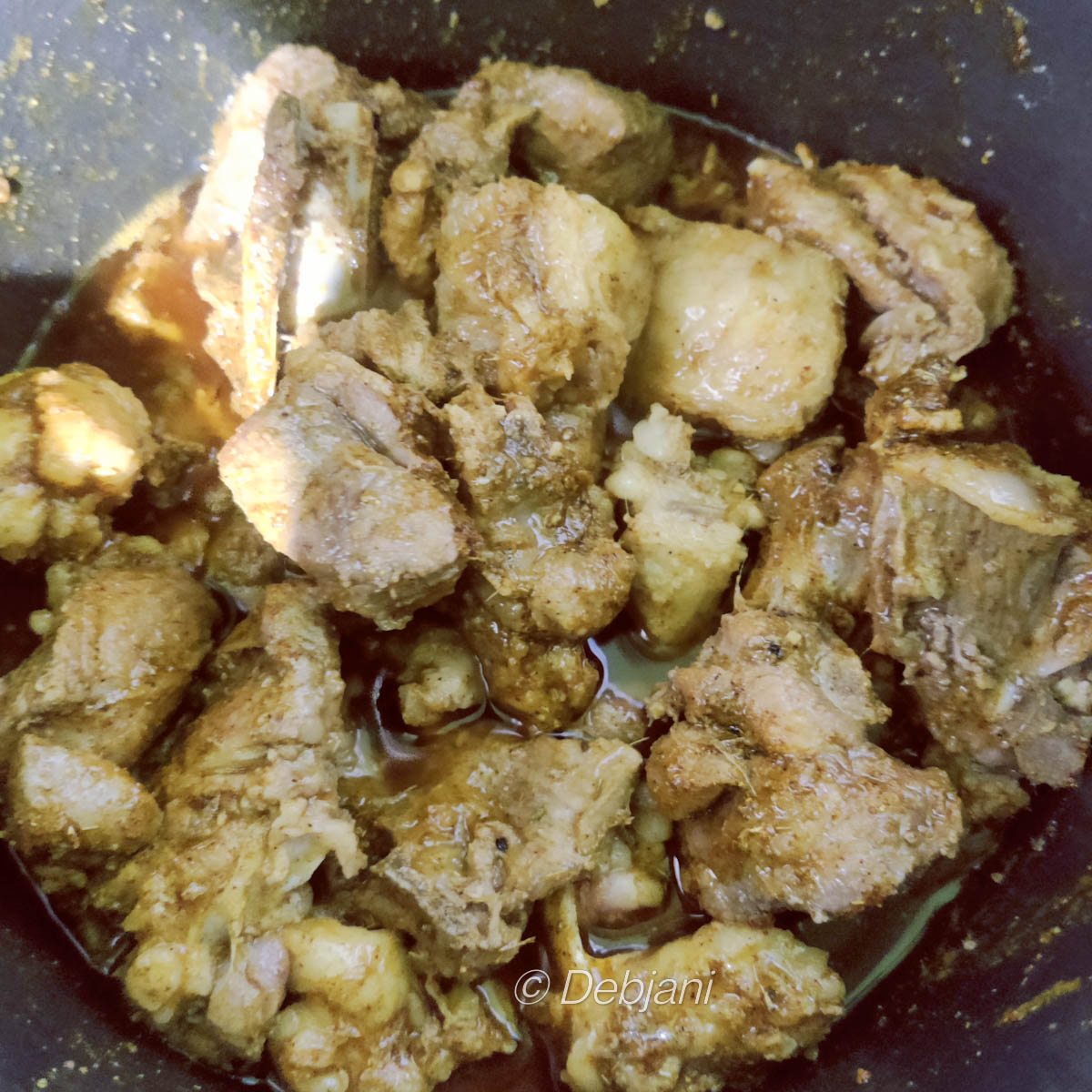
Fry the mutton chunks in a mixture of ghee and oil till it changes color. Check the recipe card for measurements as well as for the time needed.
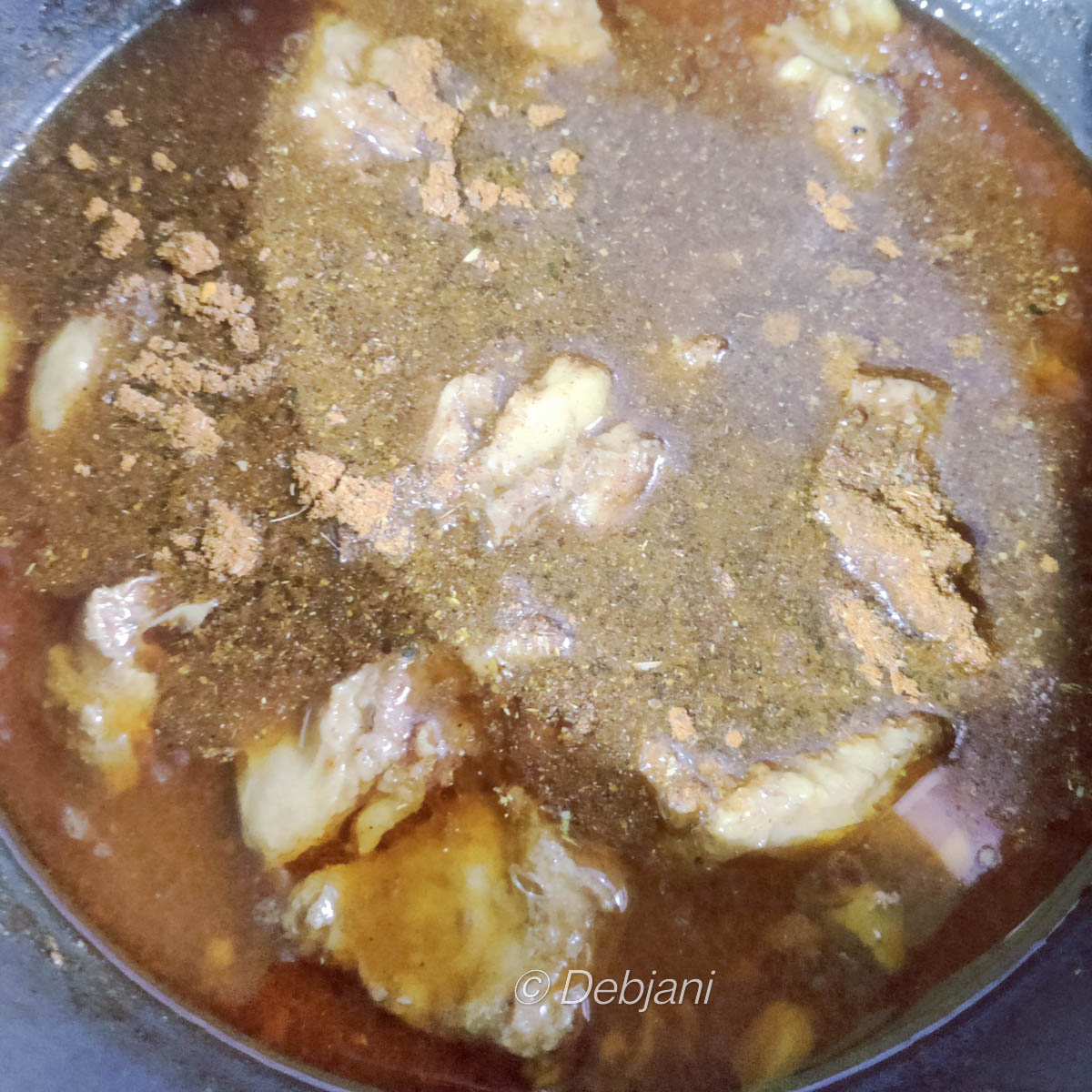
Add Nihari Masala (see recipe card for measurement) and slow cook the mutton
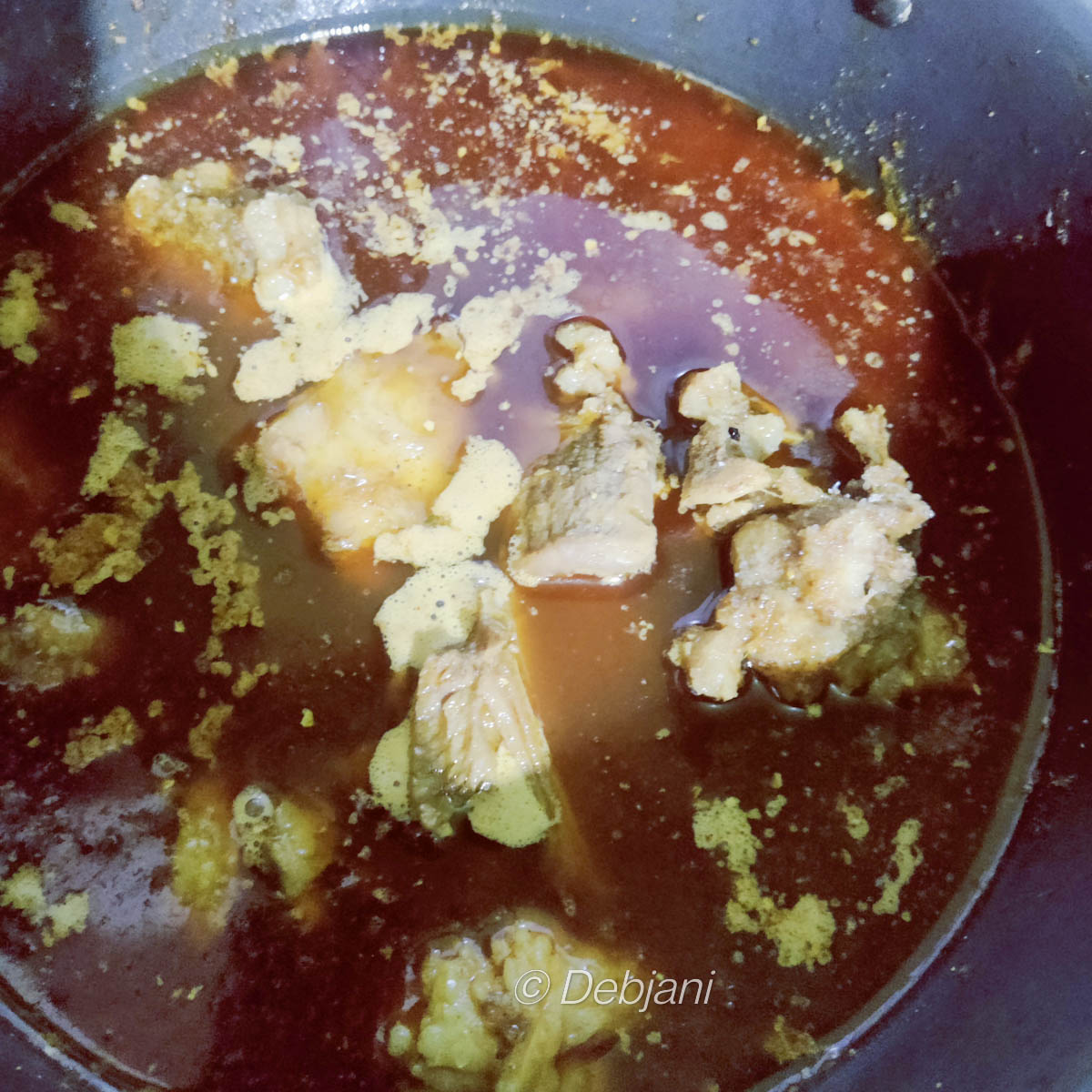
Cook the mutton till it releases sufficient moisture
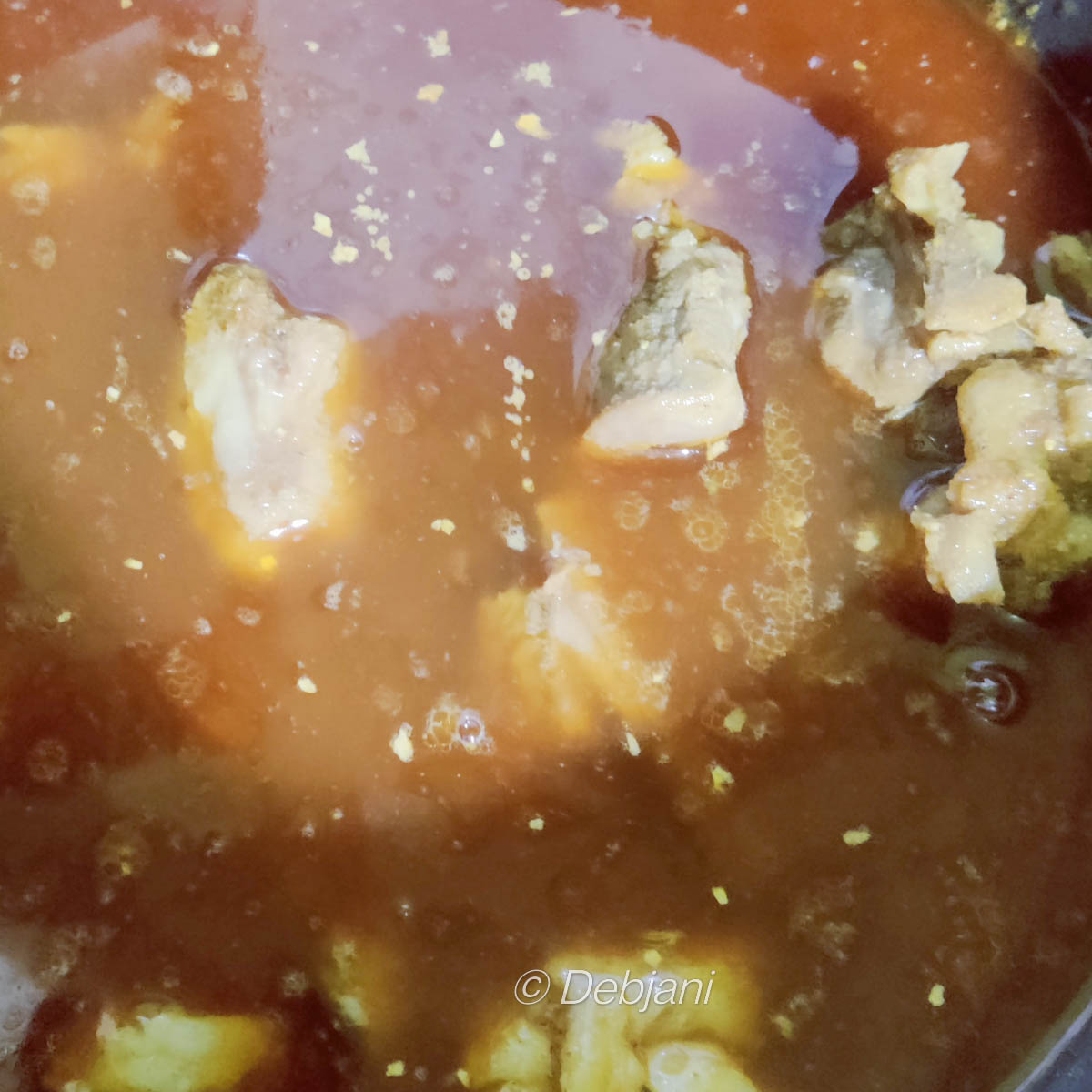
You need to add boiling water and slow-cook the mutton for hours to cook the perfect mutton nihari. See the recipe card for details.
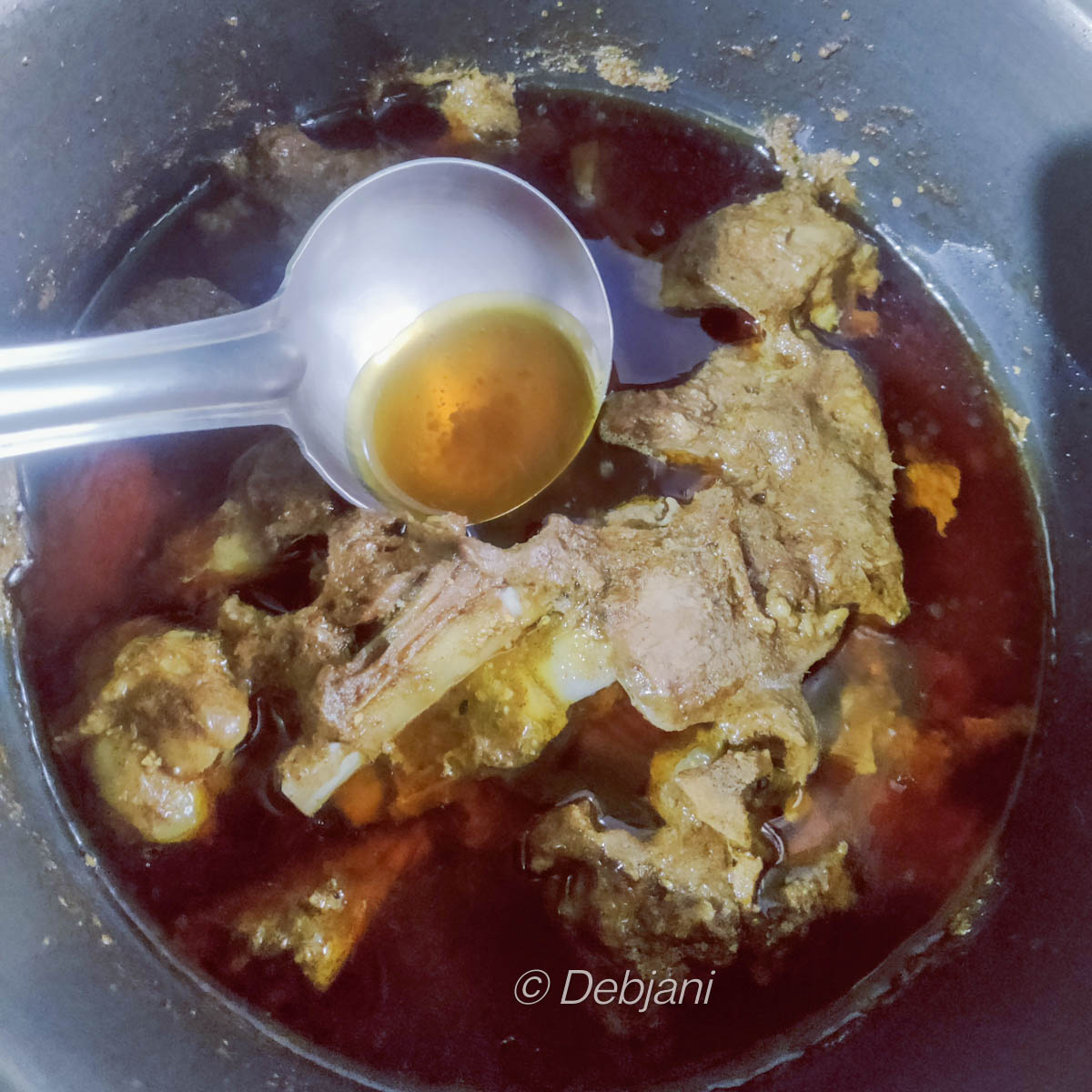
Reserve Tehr (oil) which will be floating on the top of the Nalli Nihari while cooking
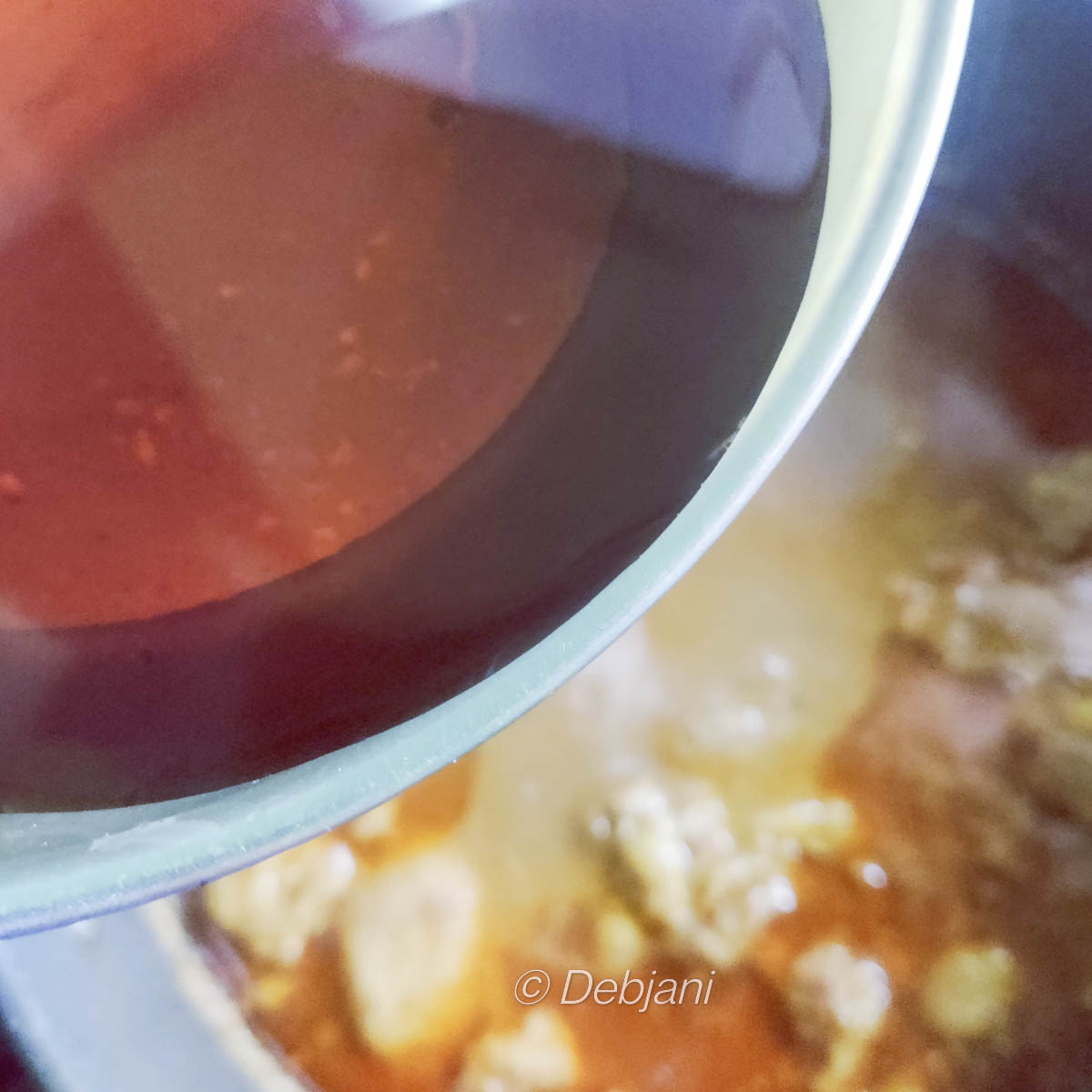
Add Slurry (check the recipe card for the slurry-making process) to make the gravy rich for Nalli Nihari.

When the Nihari is almost ready add the remaining Nihari Masala.
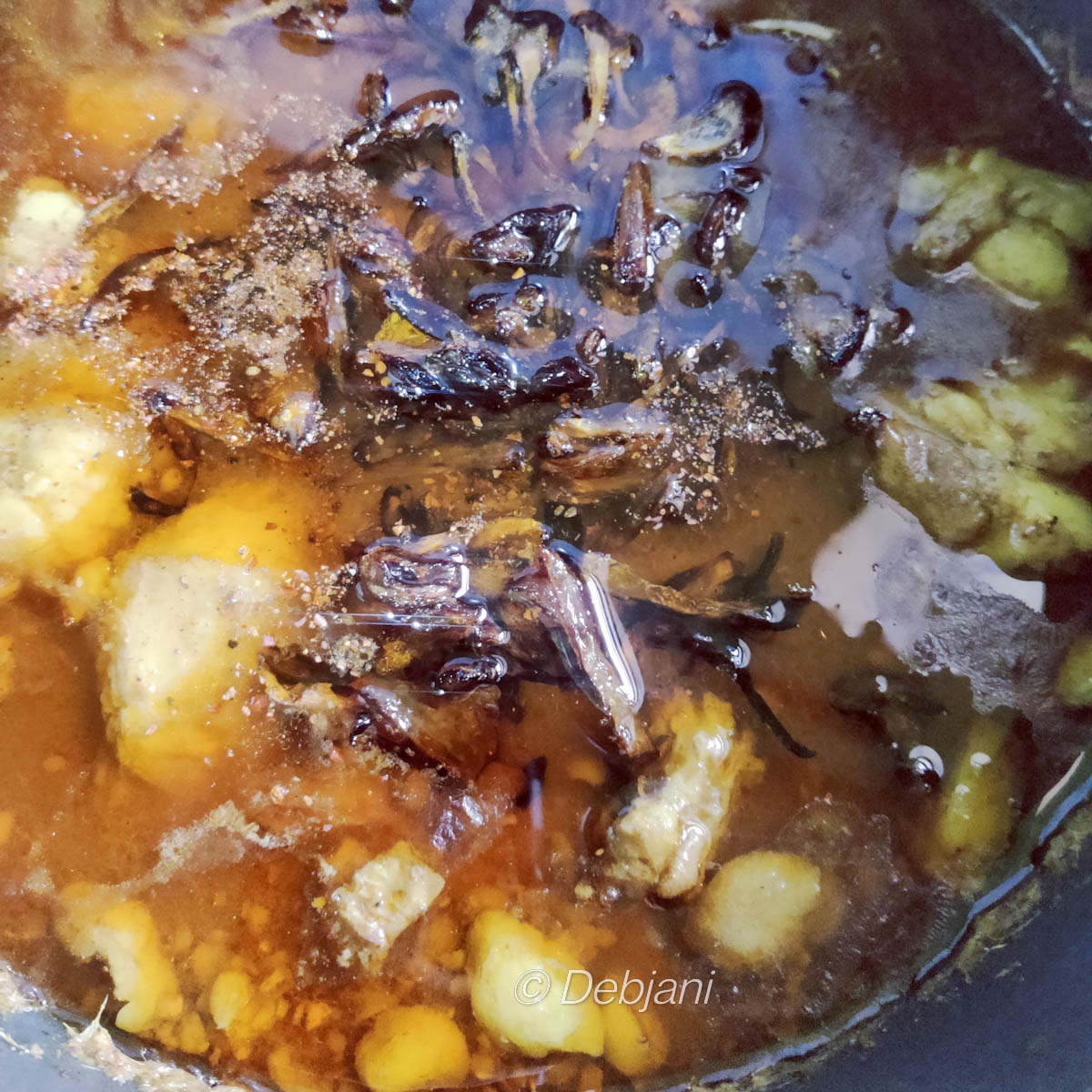
Top it with the oil separated in the earlier step, onion crisps, lemon juice, and julienned ginger while serving

You can see the texture of the Mutton Nihari. I cooked it for 6 hours. Check the recipe card for minute details.
Equipment
A large Vessel with a proper lid is a must while you are cooking Nihari at home. I prefer using a heavy duty one.
Here's how I cook Nalli Nihari at Debjanir Rannaghar
PrintRecipe Card
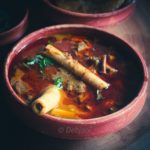
Nalli Nihari | Mutton Nihari Recipe | Gosht Nihari
- Total Time: 6 hours 30 mins
- Yield: 6 people 1x
Description
Nalli Nihari aka Mutton Nihari is a heritage Mughlai winter delicacy where shank meat is cooked with selected spices for hours to reach the level of perfection
Ingredients
- 1 kg Mutton Shank Meat (cut into pieces with the marrowbone)
- 100g Fat from the portion near to liver of the mutton (cut into chunks) (optional)
- 100g lamb brain (optional)
- 2 Tbsp. Garlic Paste
- 2 Tbsp. Ginger Paste
- 3 Tbsp. Lemon Juice
- 3 Tbsp. Whole Wheat Flour
- 1 Tbsp. Deghi Red Chili Powder
- 1 Tbsp. Turmeric Powder
- 1.5 Tsp. Salt or to taste
- 150ml Vegetable Oil (1 Cup)
- 2 Tbsp. Ghee
- 4.5 Tbsp. Nihari Masala (see below)
Nihari Masala:
- 2 Star Anise
- 1 Nutmeg
- 3 Bay Leaf
- 3 pieces Cinnamon Stick (1" each)
- 20 Black Pepper
- 15 Green Cardamom
- 1 Tbsp. Coriander Seed
- ½ Tbsp. Cumin Seed
- 1 Tbsp. Fennel Seed
- 10 Cloves
- 1 Tbsp. Dry Ginger (Powder)
- 1 Tbsp. Red Chili Powder
- 1 Tbsp. Turmeric Powder
For Garnishing:
- 3 Tbsp. Ginger (Julienne Cut)
- 50g Cilantro (chopped)
- 4 Lemon Slice
Instructions
Making Nihari Masala
- Blend all the spices listed in the "Nihari Masala" section until they form a rough powder.
- Next, incorporate 1 tablespoon each of dried ginger powder, red chili powder, and turmeric powder into the spice blend.
- Store this mixture in a sealed container.
- To create nihari with 1 kilogram of meat, you will require 4.5 tablespoons of the prepared Nihari Masala.
Marinating the mutton
- Clean and dry the pieces of meat.
- Combine 1 teaspoon of salt, 2 tablespoons of ginger paste, 2 tablespoons of garlic paste, and 1 tablespoon of Nihari Masala to marinate the meat. (refer to previous step)
- Allow the mutton to marinate for 30 minutes.
Slow-cooking Mutton Nihari
- Begin by boiling approximately 2 liters of water in a pot.
- Ensure that this water is easily accessible for the mutton, as it will be added gradually.
- Next, heat both oil and ghee in a deep pot.
- Make sure that the pot has a secure lid.
- Once the oil and ghee mixture is adequately heated, add the mutton pieces and fry them on low heat for approximately 5 minutes.
- Afterwards, incorporate 3 tablespoons of the Nihari spice powder into the meat and mix thoroughly.
- Continue cooking on low heat for an additional 5 minutes.
- By this point, the meat will have released its moisture.
- At this stage, add the boiling water while keeping the heat low.
- Add salt to taste and, if desired, chili powder.
- Cover the pot with a lid and allow it to simmer on low heat for 5 hours, refraining from stirring the meat.
- If necessary, add boiling water intermittently to maintain a runny consistency in the curry.
- You may need to add 500ml of water as needed.
- After 4 hours, the meat will be fully cooked and the curry will have a layer of oil floating on top.
- Using a spoon, carefully remove and set aside this oil in a separate bowl.
- Finally, combine 3 tablespoons of whole wheat flour with 1 cup of hot water to create a semi-runny mixture or slurry.
- Gently combine the curry with the spices.
- It is unnecessary to mix the Nihari excessively.
- Allow the curry to simmer for an additional hour without stirring.
- After a total of approximately 6 hours of cooking the meat, turn off the heat.
- Sprinkle ½ tablespoon of spice mix and lemon juice over the curry, lightly mixing it in.
- Drizzle the reserved oil and ghee mixture on top.
- When serving, garnish with ginger julienne, lemon slices, and chopped cilantro.
Notes
- I am not a proponent of the quick and easy approach to preparing Nihari. This particular dish requires a significant investment of time in the cooking process.
- The selection of meat pieces is of utmost importance, with the shank being an essential component. While the inclusion of brain and fat is optional, they do enhance the overall flavor and quality of the dish.
- It is possible to opt for a faster cooking method by utilizing a pressure cooker, but the resulting outcome will deviate significantly from the authentic essence of nihari.
- Instead of Deghi Red Chili Powder, you can use Kashmiri Red Chili Powder or any other type of mild Red Chili Powder. But if you're using a spicier version, you may want to use less of it.
- Prep Time: 30 mins
- Cook Time: 6 hours
- Category: Mutton
- Method: Cooking
- Cuisine: Mughlai
Nutrition
- Serving Size: 225g
- Calories: 818
- Sugar: 0.8g
- Sodium: 758mg
- Fat: 63.4g
- Saturated Fat: 20.3g
- Carbohydrates: 10.5g
- Fiber: 2.7g
- Protein: 50.6g
- Cholesterol: 463mg
Related Recipes
- Morshumi Sobji diye Murgir Jhol | Light Chicken Curry with Seasonal Vegetables - Winter Version
- Jhinge Aloo Chingrir Tel Jhol aka Jhinge, Aloo diye Bagda Chingrir Tel Jhol
- Mangshor Jhol (Bengali light Mutton curry) in a Pressure Cooker!
- Bengali Mutton Stew with Veggies in a pressure cooker | Shobji diye Mangshor Jhol
Mughlai Recipes from Debjanir Rannaghar!
- Kolkata Style Mutton Rezala (Also known as Mughlai Gosht Rezala)
- Kolkata Mutton Biryani (also known as Calcutta Biryani)
- Kolkata’s Mutton Tikia (Also known as tikia Kebab)
- Hyderabadi Haleem (also known as Mutton Haleem)
- Awadhi Vegetable Tehri (also known as Tahiri)
- Mutton Handi Kebab (also known as Handi Kebab)
- Restaurant Style Chicken Malai Kebab (also known as Chicken Reshmi Kebab)
- Chicken Chaap (also known as Kolkata style Chicken Champ)
- Tandoori Chicken (Also known as Tandoori Murg)
- Restaurant Style Navratan Korma (also known as Navaratan Korma)
- Shahi Paneer Korma (Also known as Shahi Paneer)
- Malai Kofta (also known as Paneer ke Kofte)
- Sheer Khurma (also known as Seviyan)
- Hyderabadi Double ka Meetha (also known as Sahi Tukda)
Have you tried the Gosht Nihari recipe from Debjanir Rannaghar!
Please inform me of your experience and feel free to send a photo to dolonchttrj@gmail.com. Additionally, you can find me on various social media platforms such as Instagram, YouTube, Facebook, Pinterest, Google News, X, and Thread. Don't forget to use the hashtag #debjanirrannaghar when sharing your attempts at my recipes or if you have any questions or recipe requests.

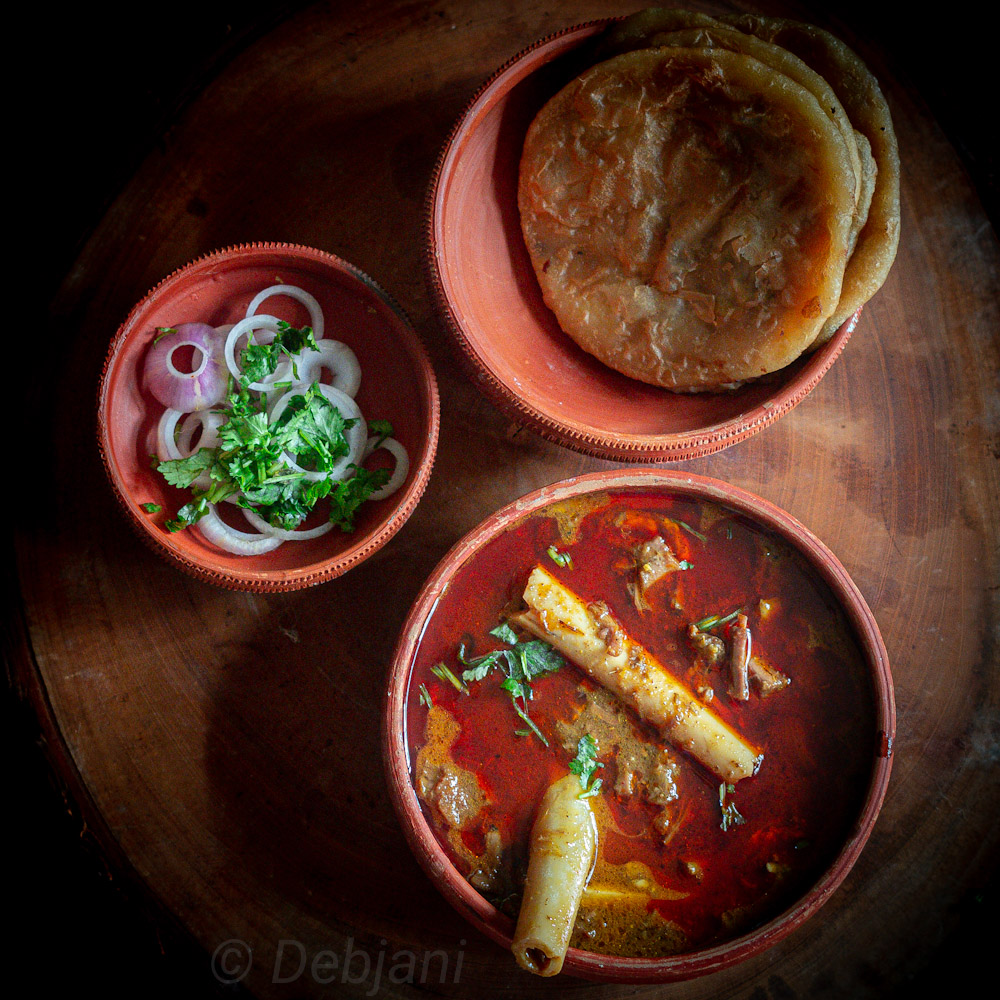
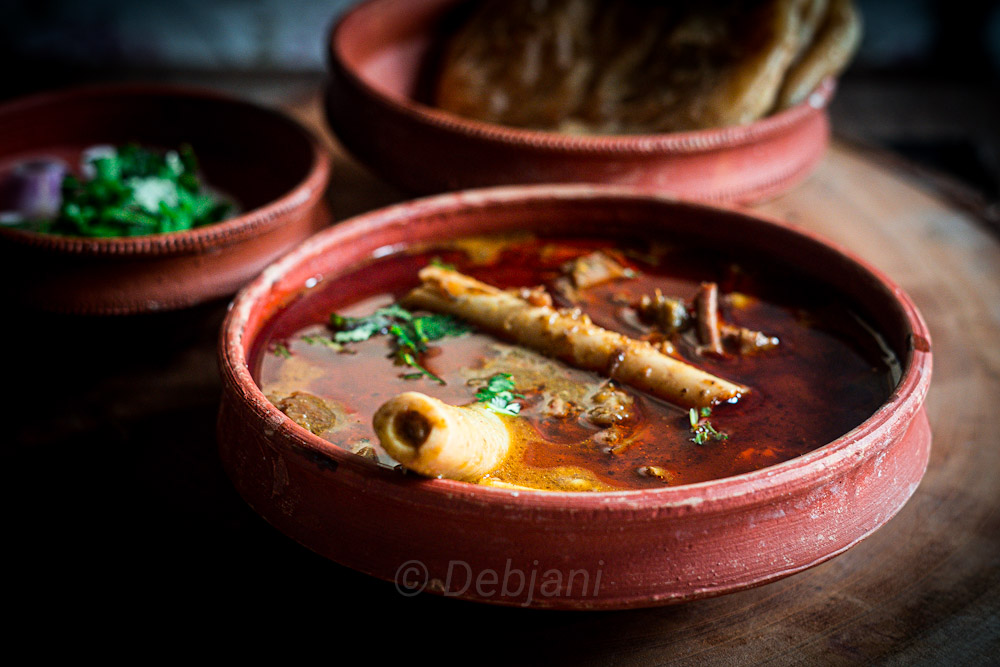
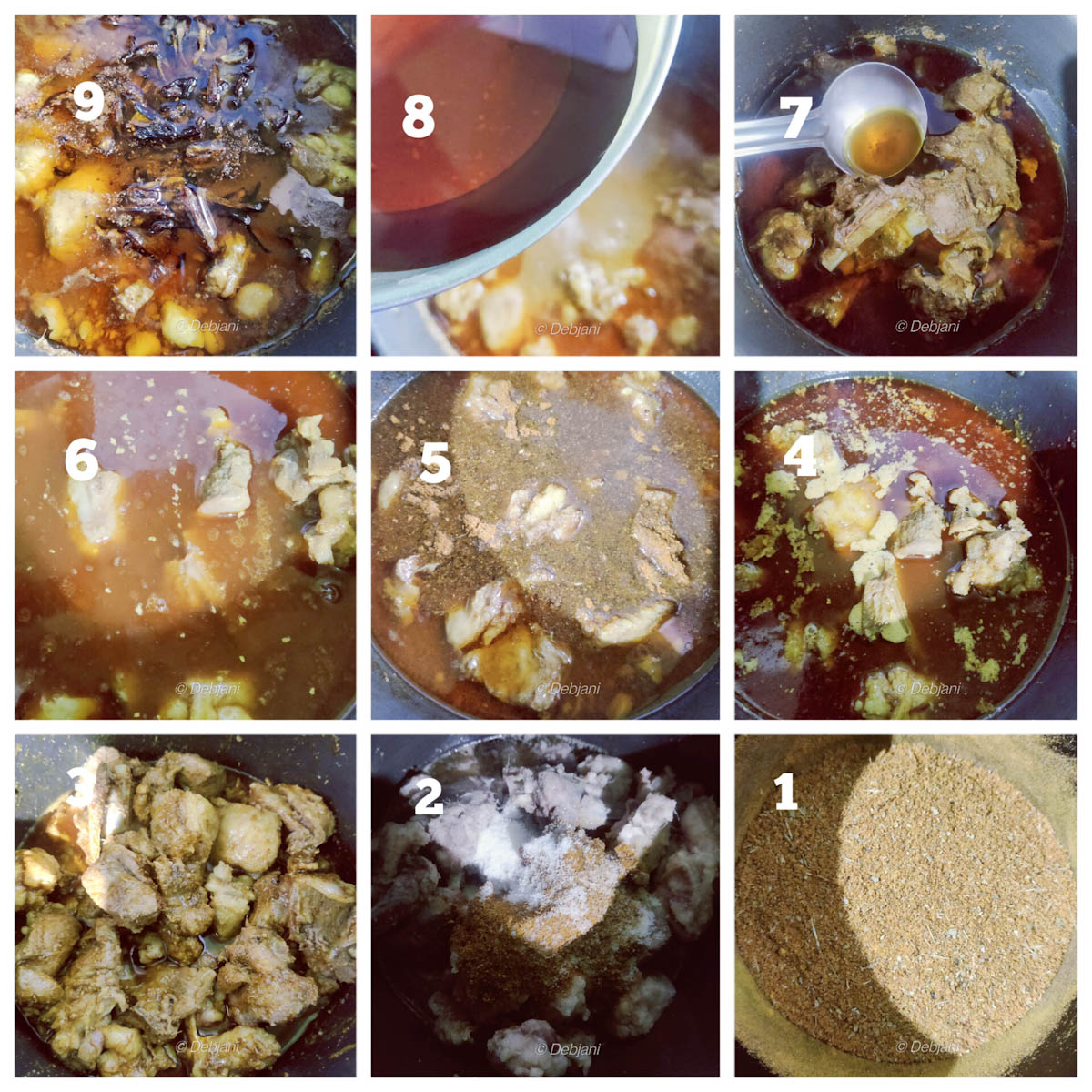

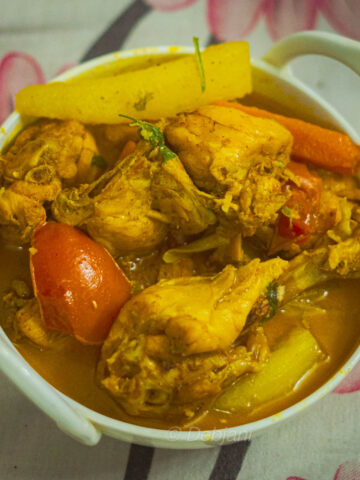
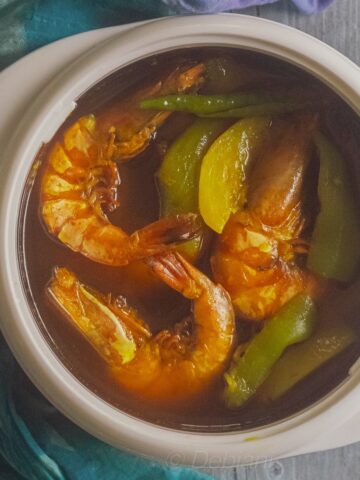
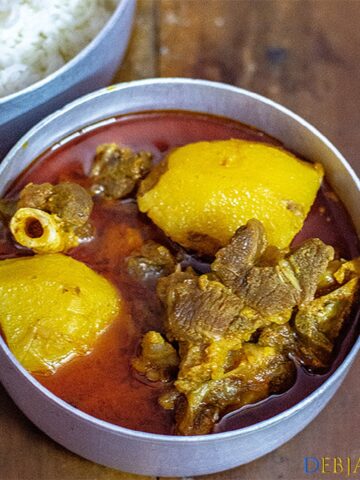
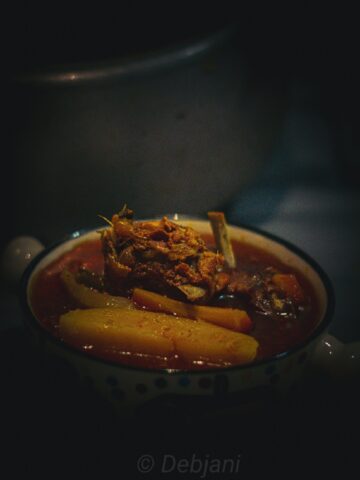
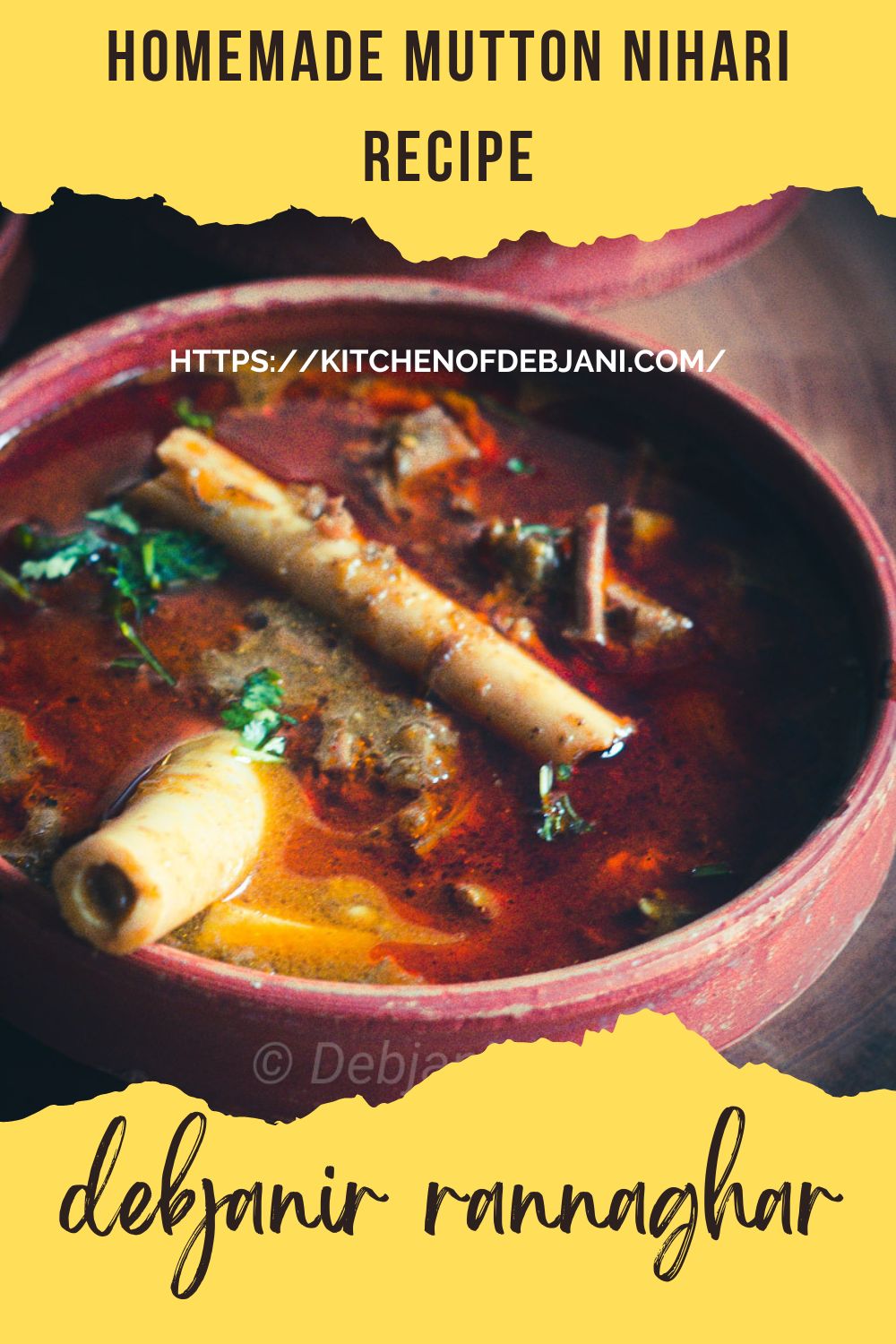
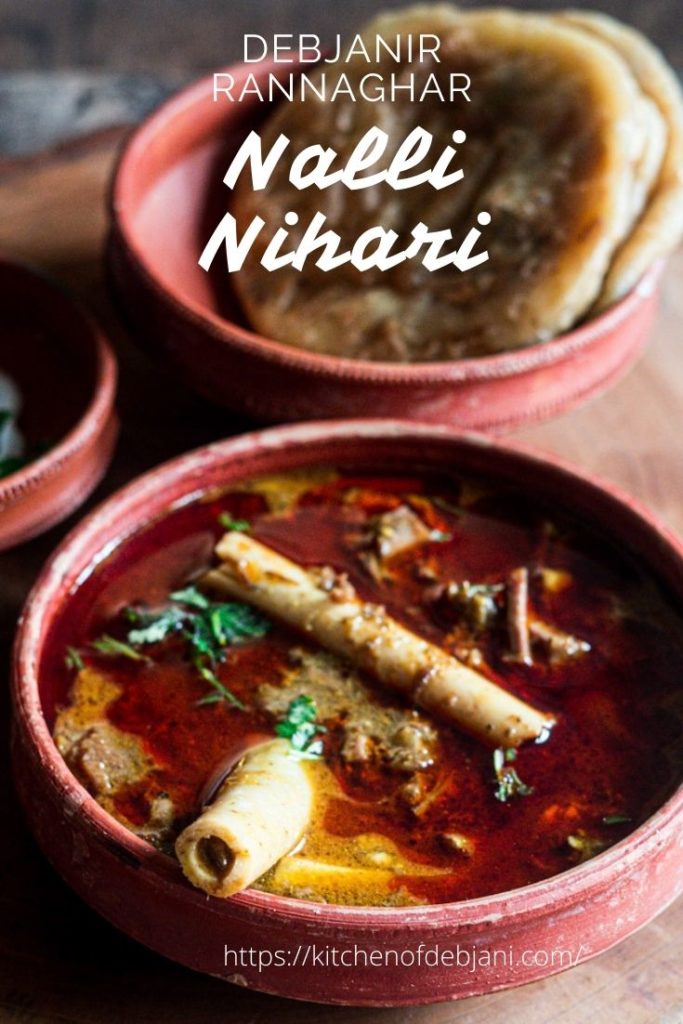


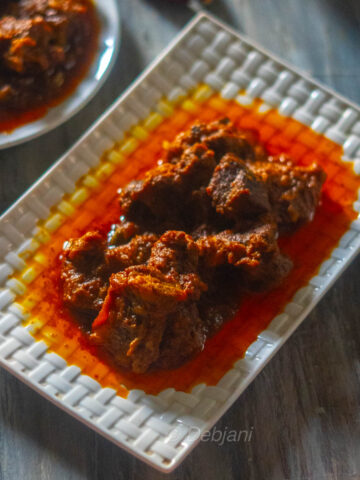
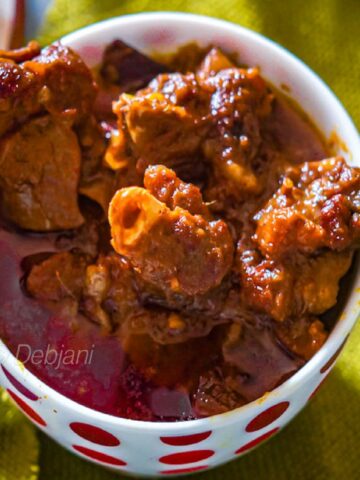
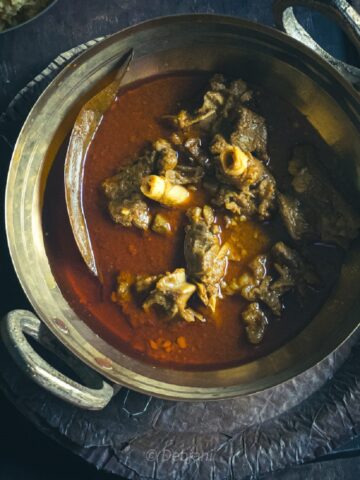
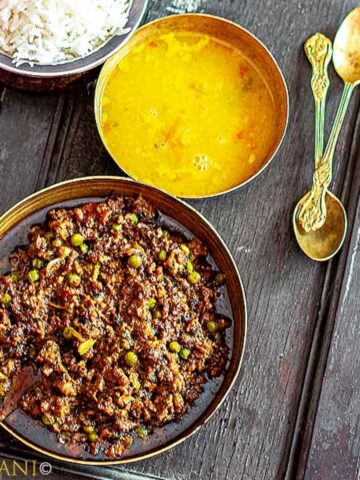
Iain says
I suspect you might have your measurements wrong, or you use a much much much milder chilli powder than me. A tablespoon of chill powder in any recipe for a small number of people is simply inedible. Did you mean a teaspoon?
I’m well versed in making Indian food and also, for example,Thai foods which call for quite a few fresh hot chillis. It’s not that I don’t like hot food, but a tablespoon of powder is like the equivalent of tens of the very hottest chillis. Too much to be edible. And then you suggest adding more before serving!
This isn’t supposed to be an explosively hot dish.
Debjani says
This measurement is specifically for Indian Degi Red Chili Powder or Kashmiri Red Chili Powder. It is accurate when cooking with over one kilogram of meat and a dish that has a thin gravy. I appreciate you bringing this to my attention. Please note that this measurement does not apply to The Carolina Reaper, Trinidad Moruga Scorpion, or Bhoot Jholakia varieties of chili or similar
Aman. says
I didnt notice u write red chilli powder. i use only kashmiri red chilli powder. It gives good colour n mild spiciness. But I believe u r using too much of nutmeg, star anise n green cardamom, n cloves. Or much less of coriander seeds. But liked ur recipe.